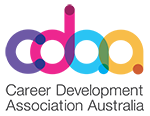Career Opportunities Arising from the 2020 Federal Budget
Last night’s Federal Budget announcement has left Australians with a broad impression of the government’s plan for economic recovery but few clues as to how job seekers over the age of 35 position themselves for the COVID-adjusted employment market. We do know that stimulating business is central to this plan and that infrastructure has turned out to be of secondary importance.
Significantly, businesses have been granted a range of tax cuts and incentives aimed at encouraging them to employ more people (the JobMaker Hiring Credit) and purchase more capital assets (‘temporary full expensing’). This probably means things will be running as COVID-usual for the next few months, with the flow-on effects of the stimulus package starting to take firmer shape early next year. At prompting from journalist Laura Tingle, however, the Treasurer Josh Frydenberg has also conceded that some businesses will ‘go to the wall’ once JobKeeper payments cease. Indeed, the budget has been partly informed by the estimate that the unemployment rate will peak at 8 per cent between now and the end of the year, though it is expected this will drop back down to 6 per cent by 2022-23.
For many of us it’s going to be a rocky ride and, until a clearer picture comes into view, preparing adequately will prove something of a challenge. We can still make some preparations, though. If you are currently in work, you are uniquely positioned to know the likelihood your organisation and, more specifically your position, will still exist after March next year. Use this knowledge to your advantage. If you are currently looking for work, you will have a rough idea of how your industry is faring by the amount of positions that have either been closed or made available over the course of this year. If you suspect your industry is flailing, consider how your skillset and experience may effectively translate to other sectors and roles. Seek can be a useful guide here: entering one or two of your core competencies into the ‘Search’ field can throw up some surprising, and valuable, results.
The most important thing is to not give up because almost anything can happen. Who last year thought that a stockpile of fabric remnants would be the makings of a flourishing reusable facemask business? Not me, for one. If this year has taught us anything, it is that nothing can be taken for granted, and that can have positive implications too.
To be continued
Whatever your decision may be, here at Executive Agents, we’re willing to work with you to find the best way forward for your job seeking journey. Get in touch today for a free consultation.
6 Pros and Cons of Video Resumes
Video resumes present valuable strengths (it shows your personality, displays your video editing skills, and offers a competitive advantage) while suffering from significant drawbacks (it doesn’t give a full picture of your career, doesn’t show your writing skills, and allows for discrimination).
8 Essential Tips for Video Interviews: Lights, Camera…Zoom!
The popularity of video interviewing will continue to surge, even when COVID-19 seems safely behind us. In fact, given the increase in remote working and working from home arrangements, video interviews are set to become the new normal. That’s why Evelyn Manfield at ABC News suggests you treat learning interview techniques across a variety of channels and platforms as not just an interim fix but as a form of genuine upskilling.
Gender Equity and Recruitment: the Good, the Bad and the Algorithmly
In the decades since Germaine Greer wrote The Female Eunuch and Aileen Moreton-Robinson wrote Talkin’ Up to the White Woman, women from a range of backgrounds have become more visible in the public domain and increasingly recognised for their roles in shaping the world. This is no less true of the workforce, where women are now employed across a wider variety of sectors and roles. Yet gender discrimination persists and has an impact on every aspect of employment, right down to the job application process.
4 hacks to stand out in the tough new COVID-19 job market
If COVID-19 isn’t enough of a punch to the guts of the economy, unfortunately it ramps up the difficulty for jobseekers as well. With more and more people losing their jobs, a greater number of talented folks are competing with you for the same jobs.
It’s a classic case of simple demand and supply. There’s a greater supply of talented jobseekers (you), and a smaller demand for them (as companies can’t afford as much). And, according to those classic economic laws:
Supply increases => price decreases
Demand decreases => price decreases
Unfortunately, that means ‘price’ (your salary) is decreasing twice!
So what does it all mean? Well, beforehand, you could skate by and command a high salary based on your skills alone, but in a COVID-19 competitive jobseeking environment, you have to counteract these forces by standing out. Here are four ways to elevate yourself above your competition:
1 .Leverage niche skills, or learn new ones
The number one way you can stay relevant during a tough job market is to possess a skill that other people in your field don’t have.
Let’s say you’re a marketer with management consultancy experience. This is a (genuinely exceptional) competency that other people in marketing usually won’t have — which translates to a competitive advantage for you. Or suppose you want to become a Department Manager for the first time, and you’ve got prior experience as an entrepreneur running a side business. This is another strong skill that your competitors may not have, which makes you the stronger candidate.
In order to leverage skills into a competitive advantage, however, you don’t need to learn a completely new industry, nor do you need to torture your brains creating a profitable new business within three months. Instead, the best way is to focus on niche skills — smaller specific abilities, within your industry, that most people don’t possess.
Maybe you’re a Human Resources Coordinator looking for a job. Maybe it used to be that Human Resources was a ‘people-based’ industry, where a bubbly personality and a bright smile could solve most problems.
Now, however, with the rise of data analytics, you can create a genuine competitive advantage over your fellow candidates by proving you’re good at creating, collating, and presenting data to corporate decision-makers. By focussing on this niche skill that other people don’t have, you just might find yourself with a new job despite the COVID-19 job market.
2. Record yourself for virtual interviews
With most businesses still maintaining work-from-home practices, it’s likely your interview will be virtual. While you may quiver at the knees at the thought of conducting an interview online, this is actually an amazing opportunity.
The thing is, other jobseekers also aren’t used to conducting virtual interviews either — which means, if you prepare and improve, you can differentiate yourself once again from the pack.
The right way to prepare for a virtual interview starts from the basics. Universal interview etiquette is still important, such as dressing well and making sure you’re present on time, while there are also virtual-interview-specific needs, such as making sure the room is quiet so you won’t be disturbed for that block of interview time. (This can be tricky if you have kids at home!)
Most importantly, if you’ve never done a virtual interview before, it’s essential to practise. Run through each difficult question (like ‘What are your greatest weaknesses?’ and ‘Can you tell me about a time you failed?’) several times so you’re confident.
Online interviews also exhibit unique challenges. Make sure you test your computer for volume, connection, microphone, video camera, and any other necessary technology. Another underrated challenge of the virtual interview is how it can be extremely easy to forget to make eye contact.
For a virtual interview, you have to pretty much make excessive eye contact with one spot on your screen during the whole interview. This can feel awkward, not least because it feels like you’re breaking social norms by staring too much at the other person, but it’s important to remember that (with your head taking up almost the whole screen) everything you do with your eyes will be magnified.
Ultimately, you can make the virtual interview process feel a lot easier and more natural by recording yourself to see how you look on video. Yes, seeing yourself on camera is one of life’s greatest torments, but if you land your dream job because of all this preparation, are you really still going to complain?
3. Elevate your LinkedIn presence
In a time where 77 per cent of recruiters are using LinkedIn, and during a pandemic where everyone is stuck at home, your LinkedIn profile has never been more important.
These days, recruiters don’t just look at your resume, cover letter and interview: they thoroughly examine your social media presence as well. Lose the Facebook posts about winning a Multi Bet and start posting about that company award you won, even if it feels cheesy.
For professionals, though, the most important form of social media is still LinkedIn.
A strong LinkedIn profile translates to excellent personal branding, and authentically telling people your story over social media helps build trust with the real you. Plus, one of the best things about having an engaging LinkedIn is that it suggests you’re confident with technology.
There’s a lot of things to think about for LinkedIn, but don’t forget your Headline and Background Image. Most people don’t bother with these, so they can really separate your online presence compared to an equally skilled but less tech-savvy competitor.
Mastering these little tips for LinkedIn can be tricky. If you’re stuck, Executive Agents offers a unique LinkedIn service where we customise an online strategy for your career and your industry, and we overhaul your LinkedIn to a sleeker, professional profile.
Plus, LinkedIn isn’t just good because it boosts your application. It can also help you connect with recruiters directly. Email may feel a little cold, and cold calling straight up can be intrusive. But a LinkedIn request accompanied by a polite, complimentary message to a recruiter is much more likely to help you on the next stepping-stone in your career.
4. Use a professional resume writing service
In the past, if you were the best candidate in the pool, you could write your own resume and get away with it. But — with COVID-19 creating more competition in the job market — now you’re competing against other people who are just as talented and experienced as you are.
What’s the most obvious way to create an advantage? Your resume. That’s why resume writing services have never been more relevant, offering an immediate and oftentimes drastic improvement to your value as a candidate.
Professional writing services hold a few unique advantages over the old do-it-yourself method.
A professional resume team has seen hundreds (if not thousands) of resumes. No matter how many resume writing advice articles you’ve read, how much do you really know about your fellow jobseekers? At Executive Agents, we’re experts at identifying your value, especially at the C-suite level. It can be hard to know where you’re better than everyone else if you don’t even know what they’re doing!
In a professional resume, there’s an enormous amount of ‘hidden work’ that a self-written resume usually skips over. About 75 per cent of resumes aren’t getting past ATS software — luckily, we optimise your resume to make sure it gets through for you. We also provide a bespoke, eye-catching design to make your resume look instantly more attractive.
No matter what happens, it’s clear that the economic market will undergo a sizeable shift. If you find yourself in between jobs, here at Executive Agents we’re passionate about helping and guiding you in your job search. Contact us for a free 15-minute consultation today.
5 Industries Where You Can Look for Jobs Post-COVID-19
It’s an understatement to say that times are changing. The Australian government predicts that unemployment numbers will hit 10 per cent sometime in the middle of this year.
Still, the market is like an elite boxer — every time it gets hit in the face, it climbs back to its feet. So what will the economic climate look like after the worst of the coronavirus threat is over?
For one thing, across almost all industries, it’s unlikely the 9-5 workday will remain so strict. Even before the coronavirus, many organisations were (slowly) transitioning to flexible hours and work conditions. That evolution will only accelerate post-COVID-19, with the working population now having had a month of working from home.
In addition to that change, here are five industries that can expect to see job growth in the wake of the coronavirus catastrophe.
1 . Healthcare
Prior to the coronavirus, healthcare was already Australia’s largest and fastest-growing industry, employing over 1.5 million people across the country. As people live longer across the country, older Australians make up a larger portion of the population, and healthcare naturally becomes more important. Still, the crisis has shone the spotlight on our heroes in the overburdened healthcare sector.
We’re already seeing the growth in this industry. CSL Limited, an Australian biotechnology company that created the world’s first vaccine for the Swine Flu, currently rank #1 by market capitalisation in Australia. At the end of the trading day on 14 April, they outvalued second-ranked Commonwealth Bank by nearly $38 billion.
The healthcare industry doesn’t only include nurses, surgeons, physicians, dentists, and other medical professionals, there’s a glut of administrative jobs on offer as well, plus roles for technicians such as those who operate x-rays and other medical imaging.
Plus, if the healthcare sector is overburdened like it currently is, that means you can reorganise your skillset to include them in your target audience. If you’ve been a world-class sales executive for many years, for example, you can look at transitioning into healthcare sales. If you’ve been a business analyst in a big bank, a shift in perspective could allow you to become successful in a position that works with healthcare data.
2. Education
The other industry still powering on is the education sector. Term 2 for Australian students will continue as distance education, and online learning has charged to the front of public consciousness.
After this forced period of enormous change, many schools, universities and technical education providers will be inclined to include more online learning programmes into their curriculums. With all these changes come new problems, and new problems mean new jobs to solve them.
The education sector encompasses teachers and professors, of course, but it also includes psychologists, counsellors, after-school directors, college campus managers, and many more. If you’ve got transferable skills, it could be an optimal time to look at entering the education sector.
Plus, as parents may be reluctant to let their children return to schools, face-to-face learning will be at a premium. If you’ve got key skills of your own, you could take on an additional side gig as a private tutor to help provide a much-needed boost to Australian education.
3. IT, SaaS and other technology
Like healthcare, the IT industry has been growing naturally, but it’ll only accelerate in the wake of this catastrophe. For one thing, those education providers we mentioned earlier that are transitioning to online learning will require talented IT professionals to manage and troubleshoot their platforms and/or providers.
But every organisation, not just education, must take a genuine look at taking some of their activities and processes online. For example, a consultant travelling interstate to meet with a key client introduces exorbitant flight and hotel costs, which will become hard to justify given the limited cash flow.
Instead, the consultant may choose to organise the meeting online. While this is much cheaper in terms of expenses, it’s also additional revenue for the video conferencing provider which has previously been going to the hotel and aviation sectors.
There’s another reason the IT sector may be more well-equipped to handle this crisis than any other. Over the past 40 years, technology has been changing at a breakneck pace, and IT businesses have been forced to adapt throughout this time. That flexibility will come in handy as we grapple with the biggest economic and market shift of our lives.
4. Marketing
Marketing and sales represent arguably the most fundamental part of any business: getting people to buy your product or service. Unfortunately, this industry may take longer to climb than the healthcare, education and IT industries.
Still, if a company can’t sell itself, it won’t be able to survive. As such, when the economy begins to recover post-COVID-19, the marketing industry will no doubt come roaring back.
Even right now, however, it isn’t all doom for marketing, particularly across social media and online channels. With everyone at home and hunched in front of their computers, some sites are reaching unprecedented levels of engagement (but probably not conversions). Australians, for example, are currently spending 71 per cent extra time on cooking sites.
If you’re not currently in the marketing industry but have got some talent or interest in the area, or if you’ve successfully collaborated with your company’s marketing team in the past, now could be the time to shore up your marketing skills for a future transition into the sector.
5 . Temporary or part-time jobs, and large companies
These two sections aren’t specific industries, of course, but they may offer two of the bigger changes in the Australian economy for the next 12 months — and two of the most important psychological shifts for potential jobseekers.
As companies no longer have enough cash to sustain themselves, they’ll have to cut costs, and often the first and most expensive organisational expense is salary. Instead of onboarding full-time employees, companies may look to hire part-time or temporary employees first to test them out.
On the other side, small businesses may struggle to compete with larger companies. If that’s the case, employees may have to get used to working in large organisations, accepting both the benefits and negatives of that decision.
Jobseekers who are quick to adjust their strategy in the wake of these two shifts, and who focus their efforts on staying relevant with temporary roles in large organisations, may find themselves in a full-time job again before long, while those who stubbornly grit their teeth and keep doing what they did in the past may lose out.
No matter what happens, it’s clear that the economic market will undergo a sizeable shift. If you find yourself in between jobs, here at Executive Agents we’re passionate about helping and guiding you in your job search. Contact us for a free 15-minute consultation today.
Easy Steps to Progress Your Career During COVID-19
The year 2020 is one for the history books. Australians still reeling from the impact of devastating bushfires have had their lives thrown into further turmoil by the COVID-19 pandemic.
In these uncertain times, you might think it unwise, if not plain selfish, to invest time and energy in the transformation of your career.
For the short-term, at least, staying healthy, securing an income and managing the considerable disruptions to daily life caused by the crises are of paramount importance.
This does not mean, however, that you should put your plans for resetting or revitalising your career on permanent hold. You may need to reevaluate your expectations and timelines, but here are five very good reasons you should continue pursuing your career goals:
- The COVID-19 pandemic and accompanying global shutdown seem interminable but neither will last forever. Managing your career through the crisis is one thing but having long-term aspirations will help direct you once the crisis passes.
- The factors prompting you to reevaluate your career will not vanish because of the current crisis. According to a recent Seek survey, three of the top five reasons people leave their jobs point to a poor organisational culture. An external crisis is unlikely to change that culture for the better and may, in fact, cause it to deteriorate.
- There are few commentators who doubt the profound economic and social impact of COVID-19; fewer still can predict the industries and sectors that will flourish or flounder in the immediate aftermath of the pandemic and over the following years. Planning for change and incorporating that into a career strategy can only help prepare you for what lies ahead over the next six-to-18 months.
- The sooner you make the psychological leap to the next stage of your career, the sooner you can make yourself available for the opportunities that will help you develop professionally. These may come in the form of further training or education and may involve a reduction in earnings for the time being. Taking a well-advised course of action now, though, will bring you one step closer to achieving your long-term goals.
- Flexibility and readiness for a constantly transitioning job market have never been more important. In the first week of April 2020, the number of new jobs posted to Seek was down 65.3 per cent compared to the same week last year. Yet the likelihood travel will resume as restrictions are gradually eased has led forecasters to predict there will be some degree of recovery later in the year.
5 Essential Steps to Becoming a LinkedIn Influencer
A LinkedIn influencer resonates with their audience, provides value on topics important to their brand and followers, and is publicly known online as a trusted authority with measurable successes. Elsewhere, an influencer’s presence across various social media platforms may also impact the behaviours of users and sway them to buy a particular product or service they are personally invested in. In the general sense, an influencer possesses the power to convey their knowledge and position to a wider audience who is willing to listen, think, and possibly even act upon their authority.
However, the LinkedIn influencer’s alternative or shrewd approach to the challenging topics which affect their audience, industry, or what matters to their world is what makes their content potent and relevant to the millions of users utilising the platform. This is where their power is really derived.
Here are some steps which you can take to become an influencer within your own niche:
1 . Build a Public Profile Your Followers Can Trust
An aspiring LinkedIn influencer should ensure their reputation and trustworthiness are seamless upon first impression. This is perhaps the most important and time-consuming step in the process; taking your time to improve this area will pay off in the long-term and lay down a solid foundation. Your influencer status relies upon the effort you’ve invested in your public profile, so before embarking on ways to create and release content, consider addressing the following questions:
- Is your profile picture presentable to future employers? Is it clear and professional? An informal or low-resolution profile picture that would better suit your Facebook or Instagram channel may undermine your authenticity. Ensuring that your profile picture is set to public is also vital.
- Is your Headline captivating or is it too generic? A generic Headline could suppress your unique personality. It could also fail to set you apart on a platform that is growing in influencers. State what matters to you most.
- Is your About (Summary) section up-to-date? Walk your readers through your key experience, skills, passions, and attributes which set you apart from the rest.
- Are each of your profile sections – About, Experience, and Education especially – set to public? Having these set to private may suggest that you’re hiding something that others may not want to see. Being as transparent and open as possible will attract more LinkedIn users to engage with your content.
- Do each of your job roles incorporate an employer logo? Companies listed on LinkedIn will each have their own logo to add to job positions. This further adds to your authenticity and ensures that your profile looks immaculate.
- Have your skills been endorsed by your fellow colleagues? Does your profile showcase recommendations posted by your past or present employers? Requesting your close connections to endorse your skills or write you up a recommendation is an essential component in this process, proving that your character is reputable and reliable in diverse working environments.
Following these initial steps will highly increase your chances of becoming a LinkedIn influencer.
2. Find Your Thought Leadership Niche
Now that you’ve routinely updated your profile from top to bottom, consider ways in which you can make your mark and share content that will engage other leaders within your community. Follow news pages, publications, or other LinkedIn influencers that are aligned with your worldview and be privy to current events impacting your industry. Like, comment, and share with the topics you want to be aligned with. Your presence will be felt if you are receiving engagement in return.
Your thoughts, opinions, and experiences matter on LinkedIn, so sharing what you’re passionate about – whether it’s politics, issues like the gender pay gap or global warming, or technology – will cement your influence, build relationships, and allow you to join the conversation. Building your audience’s trust in your expertise will drastically improve your reach as a LinkedIn influencer.
3. Post Diverse Content: Newsfeed Posts, Articles, Videos
To be a LinkedIn influencer is to also be seen as a regular contributor, content creator, or advisor within your industry. Publishing periodic newsfeed updates, original long-form articles which function as blogposts, or native videos which examine a particular subject, are excellent ways to strengthen your status as an influencer and thought leader. This will establish your authority and earn you greater respect as a contributor with original ideas and opinions about certain topics. Illustrating evidence of credibility to external sources such as publications and peer-reviewed journals will also build your trustworthiness. Measuring which content platform generates the most likes, comments, and shares may also determine which one is relevant to what message you want to get across.
Importantly, devising a regular schedule for researching, designing, and editing your content will support your stance as an influencer and allow you to become more organised. Thought leadership creation, brand exposure, and external engagement from other users across the web can emerge from this with the right help.
4. Engage an Executive PR Firm such as Executive Agents to Create and Manage Content
Utilising the professional services of a firm such as Executive Agents will fast-track your path to becoming a LinkedIn influencer.
Allowing a company like Executive Agents to curate and schedule content with a quick turnaround will save you time to consider and suggest content that will engage your online community. With professional writers, proof-readers, and graphic designers onboard, your LinkedIn content will rival key influencers within your industry. As an aspiring LinkedIn influencer, Executive Agents will wield your individual voice and create content to bring value to a targeted group of followers, generating more traffic and organic search results.
5 . Constructing Your Personal Brand Through LinkedIn Premium
As you begin to notice the ripple effects created by your content and engagement with others on LinkedIn, it may be time to invest in the Premium side of the platform to see how you compare with the competition. Paying for the Premium service will enable you to further develop your skills with on-demand videos and courses which will inform your content topics, business niche, and thought leadership.
Access to more data is power in itself; LinkedIn Premium will deliver accurate business insights on your industry, shaping the relevancy of your content and what is being said on certain topics. You will also be able to gauge your audience and who is engaging with your profile, allowing you the opportunity to adapt and create content that is better suited to your audience. Perhaps this will be a way for you to shape your personal brand through ready data and insights.
Striving to become a LinkedIn influencer is a fruitful endeavour that will build your confidence and stature on the growing business networking platform. Following these steps will supplement your efforts to becoming a powerful contributor on LinkedIn, and although it may take some time, you will find equal enjoyment in finding a supportive network that will appreciate your perspective on the matters than mean the most to them.
4 Best Ways to Leverage Social Media as an Executive
In a 2018 survey, Forbes discovered that 75 per cent of employees think that a company is more trustworthy if their CEO is on social media. In 2019, though, Influential Executive found that only 54 per cent of Fortune 500 CEOs are on social media. Here are four ways to leverage social media as an executive, generating awareness to both your company and your personal brand.
1. Make sure to react and comment
There’s a reason this is number one. It’s easy to believe social media for executives is all about posting how-to articles and generating awareness, but like many things in life, social media starts from what you’re doing for other people.
So make sure you react and comment on other people’s posts! It’s the building block of everything else you do on social media. The best thing is, reacting and commenting is the most time-efficient thing you can do on social media. To research, plan, and publish an article, you need to block out at least a couple of hours. To read someone else’s post and write a thoughtful comment, though, takes about 10 minutes. It’s even easier if you found a friend posted an image.
It’s important that your comments are genuine, but don’t be harsh—if you think someone is an awful writer who knows nothing about their industry, don’t write a critical comment. In fact, as an executive, try not to write anything critical at all. Your criticism holds significant weight, and leaving a bad comment on social media is like criticising someone in public. Reserve your criticism for face-to-face interactions.
2. Write articles based on your experience and problems
Once you’ve reacted and commented on other people’s work, they’re much more likely to read your stuff. But how do you begin? It’s easy to look at someone else’s budding LinkedIn or Medium account with 100,000+ followers and get discouraged that you’ll never reach that level.
Like always, the trick is to think small. You can’t win a premiership in one go—you have to build it up with every training session. And to write a good article, you have to start in bite-sized parts. Don’t worry about article structure or getting readers or SEO; it’s too complicated to worry about at the start.
Instead, try writing about the problems you faced as an individual or team. For example, Melanie Perkins, CEO of Canva, wrote a very long LinkedIn article detailing some of the problems she faced while creating her startups Fusion Books and Canva. She mentions that when she and her boyfriend Cliff (now COO of Canva) were starting Fusion Books, some clients would ask to speak to the manager. Since it was a two-person job with no manager, ‘Cliff would pause a moment and change voices.’
It’s personal details like this that make you seem more trustworthy and authentic as an executive on social media.
(Of course, writing articles is never that easy. Keep an eye on Executive Agents, where we’ll soon be publishing an article on how to become a LinkedIn thought leader.)
3. Don’t be perfect, but be careful
The best thing about social media is that it makes everyone seem human. That goes for executives, political leaders, celebrities, athletes, and more. And if you want to be human, you’re not meant to be perfect.
Apart from personal details, the other great thing about Melanie’s article is that she’s vulnerable. While she’s currently CEO of a company worth $3.2 billion, in her article she writes about her fears, insecurities, failures, and the times she thought she wasn’t good enough. People are just people, no matter if you’re old or young or rich or poor, no matter what gender or race.
On social media, you shouldn’t try to be the perfect CEO or managing director, you should just be yourself. Something as simple as sharing a favourite breakfast meal can help generate employee engagement. Your team members could be thinking, My boss eats Weet-Bix at 7am just like I do.
But everyone’s heard horror stories of people sending the wrong Tweet and getting fired the next day, and as an executive, the heat on your shoulders is only magnified. Who knows, maybe you evade taxes, and your Weet-Bix photo accidentally includes incriminating evidence. Apart from trying to be a better person regarding the illegal stuff, the best thing to do is to get someone else to check every social media post you make. (You’re an executive; this absolutely isn’t over the top.) You can either turn it over to a trusted friend, a dedicated employee, or you can …
4. Bolster yourself with expert advice from an executive PR firm
It’s a headache, we get it. Even if you can write witty comments, post advice articles that generate tens of thousands of reads, and snap photos like a true professional—you still have to devote lots of time, because social media awareness doesn’t happen by itself.
Add that to all the safety concerns, and you see why it’s a good idea to consider consulting executive Public Relations firms, who are experts at running social media pages. Executive Agents uses an Online Reputation Management service, which we’ve used to help senior leaders from Telstra, EY, Deloitte, Woolworths, and more.
Besides, if you don’t have to worry about safety and all the ins and outs of managing your page, you can focus on just having fun—which is one of the best parts of social media. Yes, social media is fast becoming part of the executive job, but it shouldn’t be a chore like administrative activities. If you’re having fun and being genuine, your social media influence will surely be more effective.
People Don’t Quit Enough
Give yourself a chance to make a difference in a new industry and embrace your unique journey. ‘The secret of change is to focus all of your energy, not on fighting the old, but on building the new’.


 Be someone who creates their future.
Be someone who creates their future.









































